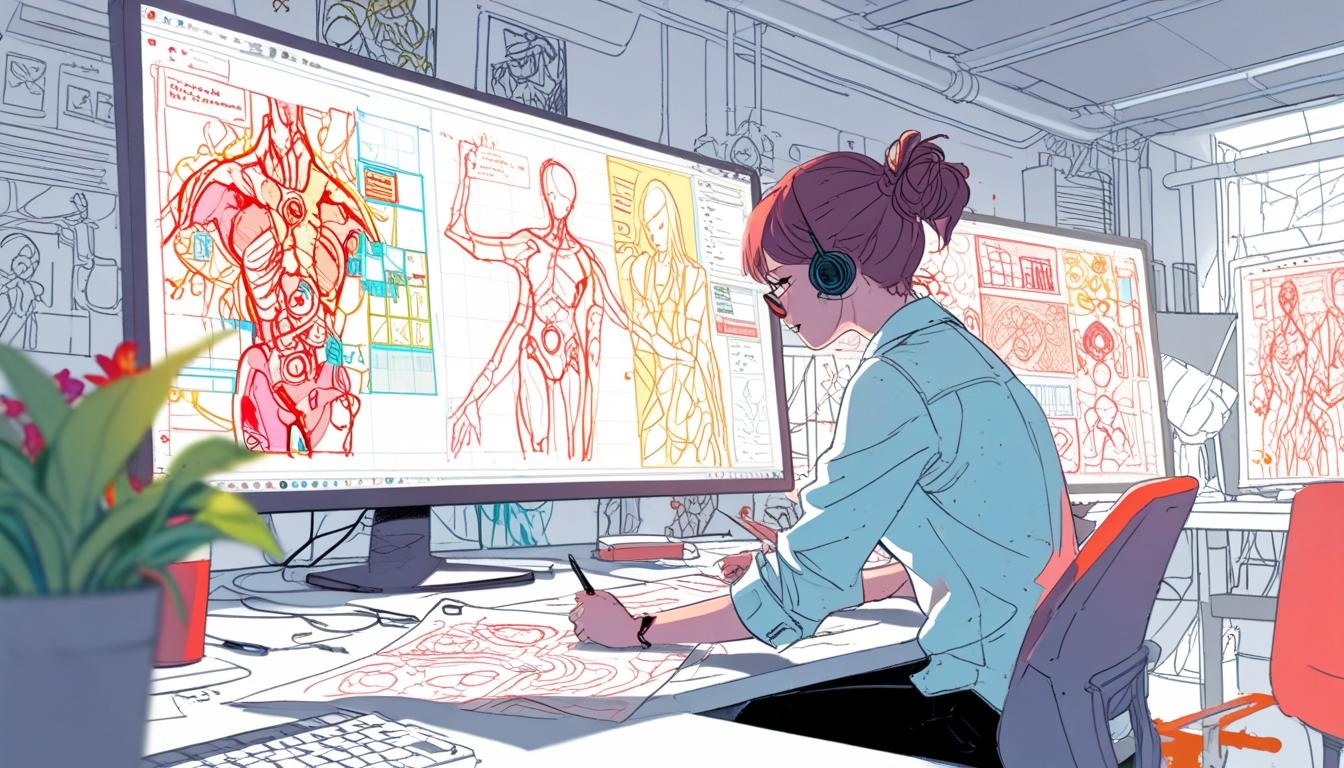Adobe is launching a suite of agentic AI features to enhance creative processes, but concerns remain about the impact on human artistry.
Adobe is making significant strides in the realm of artificial intelligence with the introduction of its new suite of agentic AI features, aimed at transforming creative workflows across various digital platforms. The company’s latest innovations are designed to take over more complex tasks within its software, surpassing the more limited capabilities of traditional AI tools.
The new agentic AI functionalities operate across several Adobe applications, including Photoshop and Premiere Pro. These AI systems are capable of suggesting and executing edits in Photoshop and analysing extensive video footage in Premiere Pro to select the best clips, create a rough cut, and apply colour corrections. Furthermore, the AI can autonomously design animated flyers in Express and extract pertinent information from PDFs in Acrobat, even generating complete sales pitches from the content.
As Adobe positions this technology, the focus is on alleviating the burden of tedious tasks, thereby allowing creative individuals to concentrate on more intellectually stimulating aspects of their work. Adobe characterises this development as a substantial potential shift in creative processes, with the ability to drastically reduce the time spent on manual adjustments and organisational duties.
However, this shift comes with its complexities. There is an inherent concern that, as AI assumes responsibility for a growing portion of the creative process, the nuances and subjective qualities that characterise human artistry might become undervalued. This is a point noted by industry observers, who question how much of the creative essence remains when human input is primarily restricted to minor adjustments.
In defence of these AI systems, Adobe underscores that their purpose is not to replace human creativity, but rather to amplify it. The AI functions as an assistant rather than an artist, as it cannot emulate personal brand aesthetics, humour, or the unique insights that come with human creativity. While it may assist in generating options and speeding up workflows, the fundamental creativity still rests with the human artists who understand their own visions.
The potential for AI to generate numerous polished concepts in a fraction of the time could lead to a diminished demand for human creatives. For many businesses prioritising rapid production and cost-effectiveness, the decision to embrace AI-generated outputs over traditional methods may appear appealing. Algorithm-generated projects that are nearly complete may prompt marketing teams to shift from a creative role to more of an editorial capacity, primarily focussing on reviewing AI outputs rather than generating original content.
Despite these advancements, the article underscores that the full relinquishment of creative tasks to AI is not imminent. Daily creative work still requires nuanced decision-making that current AI technologies cannot replicate. The media recalls past public reactions to automated creative endeavours, such as advertisements utilising AI in insensitive or misguided manners, which highlights the need for careful consideration when integrating AI into creative domains.
Adobe’s approach to integrating this technology does signal an intention to maintain human involvement in the creative process. The company emphasises a vision where creators remain at the forefront, directing their projects with AI acting as a supporting entity. The tools are designed to be transparent and responsive, enabling users to retain creative control over their outputs.
Looking forward, there are implications for the cultural landscape of creativity. The advent of AI tools could potentially reshape expectations within creative industries, leading to higher demands for speed and efficiency, potentially at the expense of traditional creative processes. Observers remark that, while agentic AI does not spell an end for creativity, it has the capacity to limit its exercise unless deliberate efforts are taken to uphold the value of distinct creative expression.
Adobe’s intent appears to be fostering a balance wherein these innovative tools can enhance creative output, while also allowing human creativity to flourish. If used wisely, this technology may democratise design and storytelling, opening new avenues for creativity in ways that have not yet been fully explored. By embracing intentional use of AI, there lies an opportunity for both novices and seasoned professionals to engage meaningfully with the creative process.
Source: Noah Wire Services
- https://www.techradar.com/computing/artificial-intelligence/will-adobes-ai-agents-cause-the-death-of-creativity – This article discusses Adobe’s new agentic AI features and their potential impact on creativity, aligning with the article’s points about AI’s role in creative workflows and the balance between human creativity and AI assistance.
- https://fstoppers.com/artificial-intelligence/adobe-incorporates-agentic-ai-across-creative-cloud-suite-698074 – This article details Adobe’s integration of agentic AI in its Creative Cloud Suite, including applications like Photoshop and Premiere Pro, corroborating the article’s description of AI functionalities across Adobe software.
- https://news.adobe.com/news/2025/03/adobe-launches-adobe-experience-platform-agent-orchestrator-for-businesses – Adobe’s Experience Platform Agent Orchestrator announcement supports the article’s mention of AI-driven automation in creative processes, highlighting how AI agents can enhance productivity in marketing and customer experiences.
- https://news.adobe.com/ – Adobe’s news website provides updates and insights into their recent AI innovations, supporting claims about the company’s strategic focus on AI in enhancing creative workflows.
- https://www.adobe.com/creativecloud.html – Adobe’s Creative Cloud webpage outlines the range of applications that now integrate agentic AI, supporting the article’s discussion of AI across Photoshop, Premiere Pro, and other Adobe tools.
Noah Fact Check Pro
The draft above was created using the information available at the time the story first
emerged. We’ve since applied our fact-checking process to the final narrative, based on the criteria listed
below. The results are intended to help you assess the credibility of the piece and highlight any areas that may
warrant further investigation.
Freshness check
Score:
8
Notes:
The information appears to be recent and focuses on Adobe’s current AI developments in creative software. However, specific dates or events that could confirm its age were not found in the provided text.
Quotes check
Score:
2
Notes:
There are no direct quotes in the provided text, making it difficult to verify the source of any statements.
Source reliability
Score:
8
Notes:
The narrative originates from TechRadar, a well-known tech media outlet generally regarded as reliable.
Plausability check
Score:
9
Notes:
The claims about Adobe’s AI integration into creative tools are plausible, aligning with industry trends and the company’s strategies. Human involvement remains crucial in creativity, which is a valid point supported by industry observers.
Overall assessment
Verdict (FAIL, OPEN, PASS): PASS
Confidence (LOW, MEDIUM, HIGH): HIGH
Summary:
The narrative appears to be recent and originates from a reliable source. While it lacks direct quotes, the information about Adobe’s AI tools in creative workflows is plausible and consistent with industry trends. Overall, the narrative is well-supported and credible.













